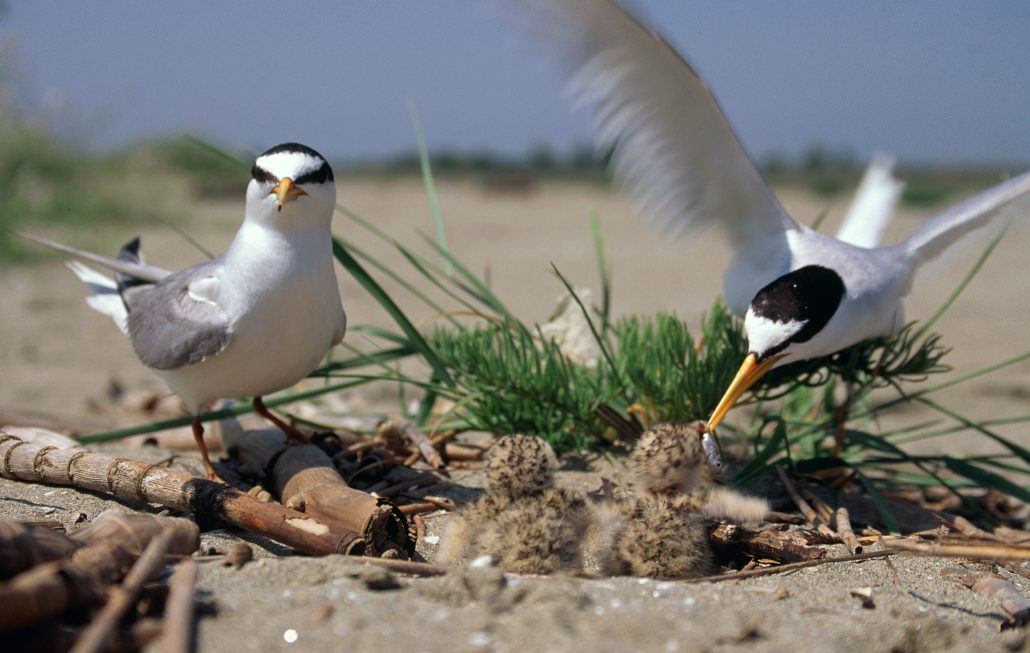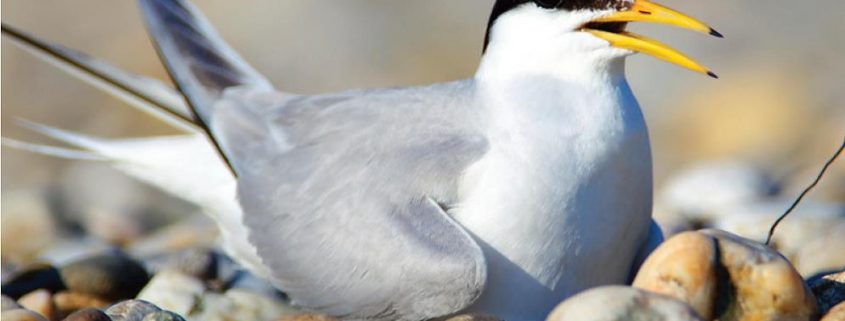Educational boards on Little tern – Ambassador of the Living Drava – set up along the Drava River
Legrad, Croatia – Natural habitats such as gravel and sand bars, which we can find only on the free-flowing parts of the Drava River, are home to some very interesting, but extremely rare species of birds- the Little tern. These habitats, and thus the species that depend on them, are jeopardized by the construction of hydropower plants, river regulation and gravel and sand extraction. One of the main goals of the DRAVA LIFE project is to improve the dynamics of the river through the restoration works, in order to create new habitats of gravel and sand bars.
There are only a few European rivers suitable for Little tern habitats – Loire in France, Vistula in Poland, Po in Italy and Sava and Drava in Croatia. According to last year’s data there are only 4 breeding pairs of Little tern left on Drava. In addition to the infrastructure, their survival is also threatened by the human disturbance as they step on the gravel and sand bars during breeding season, from mid-April until the end of July. To prevent disturbance of birds during the nesting season, partners in the DRAVA LIFE project have set up information boards at six locations along the Drava River.
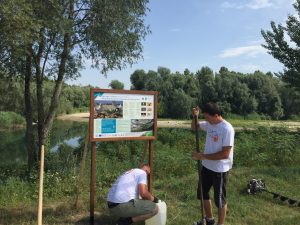
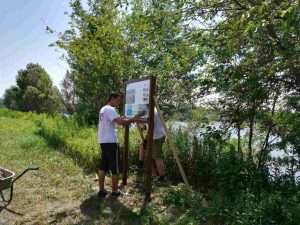
“This bird, similar to seagulls, is perfectly adapted to life on rivers and fish hunting. It is characteristic of its yellow toe and legs. They build nests on gravel and the eggs look identical to the stones and are extremely difficult to spot. In order to inform the locals, as well as tourists, kayakers and all the others who like to spend their free time on the Drava, we have placed info boards on six locations next to the river, where they can find the most important information about Little tern, its importance , protection and threats. But most importantly, please do not disturb with the birds and do not walk in the gravel bars during nesting and raising of their young,” said Branka Španiček of WWF Adria.
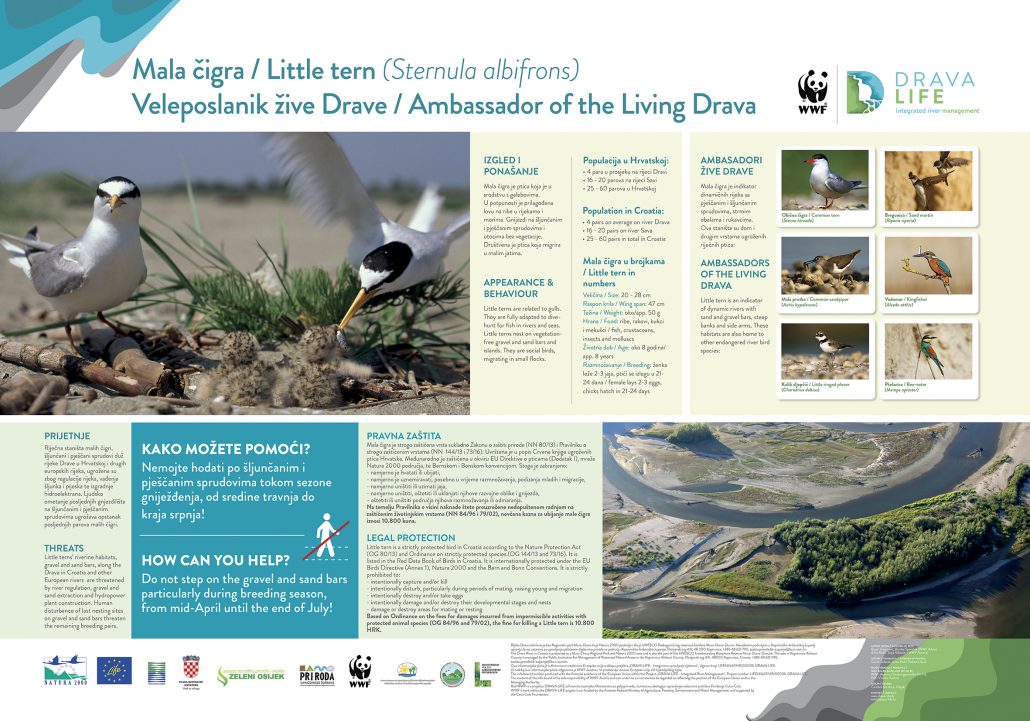
This is just one of a series of DRAVA LIFE activities aimed at restoring the Drava River ecosystem and the habitats of its inhabitants. The importance of protection of the Little tern was also recognized by fishermen and kayakers, and they supported the implementation of this activity by informing their members.
“For the conservation of the last nesting places of the Little tern, it is necessary to renew the dynamics of the river and allow the river Drava to create new gravel and sand bars. This is precisely the main objective of the DRAVA LIFE project,” concluded Španiček.
The partners have also prepared a small brochure, where you can find out more information about this amazing bird species. The publication is available here.
